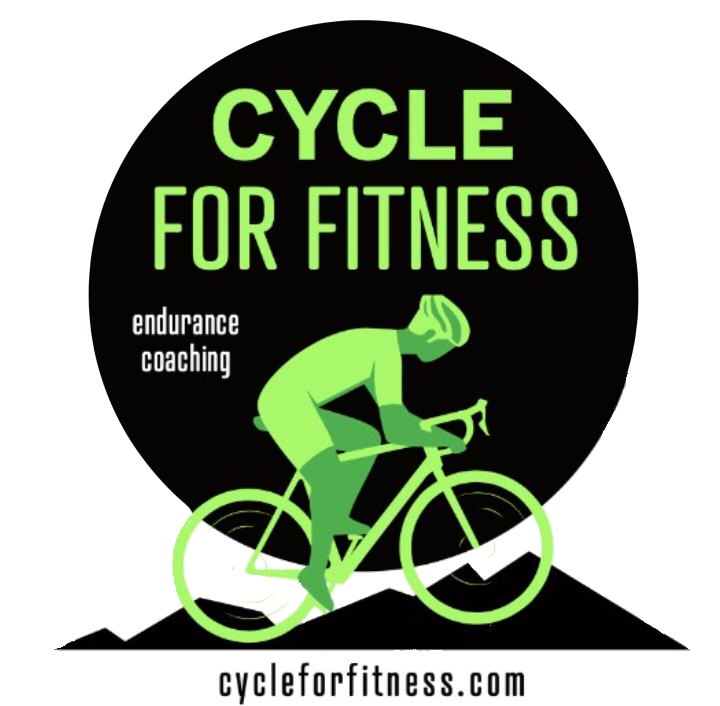When is weather fickle ?
 Or should the question be, are we really prepared, mentally and physically, for what mother nature has to throw at us, sometimes several shades of “climate” in one ride.
Or should the question be, are we really prepared, mentally and physically, for what mother nature has to throw at us, sometimes several shades of “climate” in one ride.
I have previously talked about the need for correct preparation of your bike and use of layers to keep you warm and dry on your rides, especially as we move from Autumn to Winter riding conditions, but this weekend reminded me that we also need to prepare our psyche.
Sunday morning, October 21st, 7:30am, after a quick cup of tea to bring me around, I looked forward to the promise of a few hours on the bike enjoying the beautiful colours that erupt during Autumn, especially here in Cornwall, with the bracken high on the coastal hills shimmering golds and reds in the low sunshine. Glorious.
I had checked the weather reports the previous evening, light to zero wind, temperatures climbing to a balmy 15 degrees, light clouds and sunhine….based on that my mind shifted to which bibs to wear, which gloves and shoes needed, should I put on overshoes, a gilet or long sleeve jacket….making choices of what to wear is part of the pre-ride ritual for me; get it right and you get an immediate reward as you push off, toes and fingers warm, you are a little cool, but you know that this is temporary and you will be up to temperature in a few minutes simply through your own exhertions as you warm up for the first 5 to 10 minutes.
But getting it wrong can be dire. The first few minutes you are painfully cold, and although you warm up, the extremities remain bloody cold, it isn’t a great experience !
So, back to fickle weather. I open the curtains to see, well nothing much other than a wall of sea mist that rolled in overnight like an ice blanket. Don’t get me wrong, there is something surreal when riding in mist (with strong lights and a high viz jacket), one of my fondest memories is riding across the Scottish highlands near Altnaherra with a low mist embracing the moorland and giving the appearance of rivers running uphill, but this was not the weather I had been expecting.
For a brief moment I thought “sod it”, that’s the ride buggered, but remembering that this is after all Autumn, and so we should expect changeable conditions, my evening preparation only needed to be slightly tweaked to include warmer gloves, a cycling cap and a change to full legged bibs, and I was ready.
How did it go? The first few minutes at 4 degrees was a little cool, but as I climbed out of the valley the mists disappearing behind me, sunshine greeted my cheeks, the road became smooth, the crystal clear air filling my lungs. You can hear every breath on still days such as this, the bike hums and the sounds of gulls soaring high above add layers to the emotion.
I stop at St.Ives, no longer swamped with tourist, but a tranquil haven, the bay stretched out ahead of me. In the distance, home, shrouded in mist like a welcoming embrace. A few more hills and then the descent into the harbour.
Days like this are to be cherished.

Fickly weather ? Bring it on, cycling in Autumn brings its own beauty and surprises, joy jumping in our hearts, our souls stirring with the graciousness of mother nature.
Keep riding, fitness and personal wellbeing beckons those who do.
It’s a WRAP !
Once we sign up to the idea of training or any form of exercise, at the outset we are full of motivation and “gung-ho!”, keen to do our workouts with as much vigour as possible, only to quickly feel the soreness and tightening of muscles, the aches and pains of over-exertion.
As we continue down this path, we begin to lose our mojo, with general feelings of exhaustion setting in. If left unchecked we begin to pick up injuries such as pulled muscles and strained ligaments, feelings of desperation, anxiety and inadequacy.
All the work we have put in quickly dissipates and we begin wonder if this is worthwhile…why do training, so much pain for such little gain.
If you are a self-coached athlete or just starting out, this pattern is predictable given media bombardments of training plans that offer heady cocktails of high expectations, underpinned with false promises of quick wins to fitness and health “get fit in 30 days”.... "transform your abs the easy way".... "just sign here !" Surely one of these plans contains the magic potion ?
Unfortunately not. The root cause of the issue is that these types of plans do not take into account the body’s natural rhythms and needs. Whenever we exercise or exert ourselves beyond the norm, we are putting stress on our bodies, and without rest and recuperation, this cumulative workload places stress becomes non-sustainable (Lehmann et all, 1999).
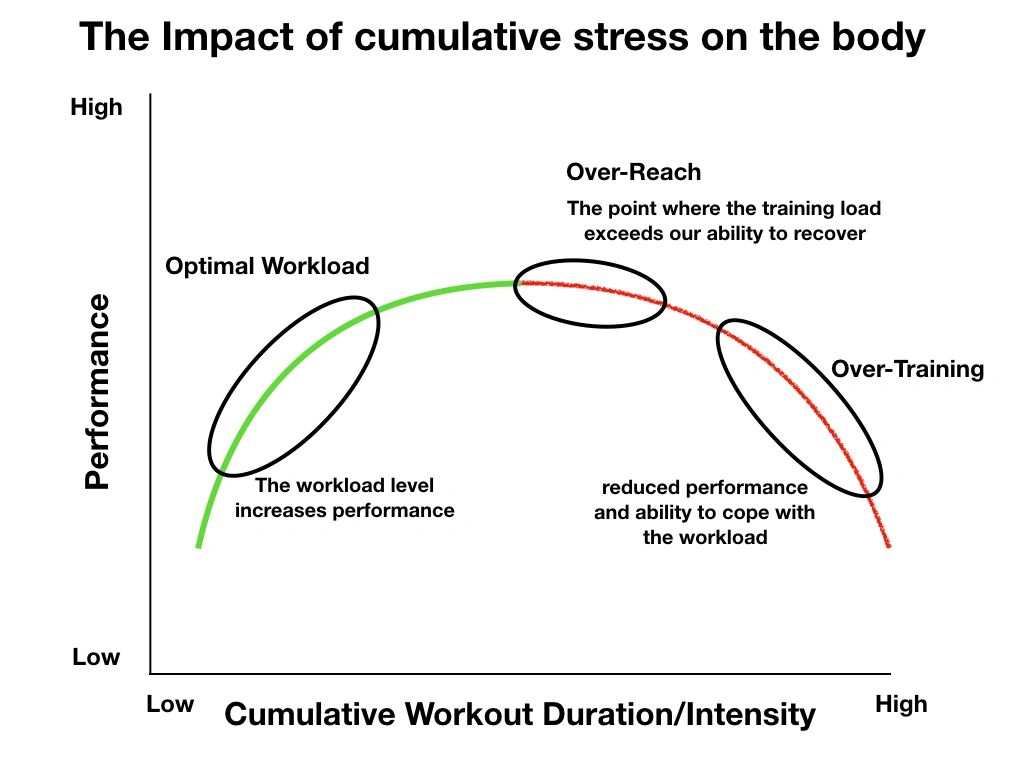
Until recently, the conventional answer was simply to rest and allow your body to recover, which in its own right is an important thing to do; however if you wish to train to have sustained performance improvements, and not simply get to the point where your fitness reaches an unsatisfactory plateau as happens frequently (even with seasoned athletes), you need allow your body to not only recover but also to adapt to the new levels of stress. This is called the Stress Recovery Adaption cycle. Without allowing for adaption we may only recover up to the original baseline and hence miss the opportunity to improve performance (see below).
As a layman I am not qualified to talk about the precise science of this, however Joe Friel of TrainingPeaks explains this in detail in his blog on the topic.
So how do we incorporate adaption ?
Here at Cycle For Fitness, our approach takes every part of this cycle into consideration. We focus on all aspects of the athlete, from developing workouts that are specific to your goals, use periodisation best practise in terms of training blocks that develop base fitness, build strength and endurance, and ensure our athletes reach their Peak performance for whatever event or goal they are working towards.
We use a combination of low intensity workouts incorporating endurance, strength and conditioning, intermingled with a limited amount of high intensity sessions, but all underpinned by HRV (Heart Rate Variability) measures as explained by Ithlete to ensure that workouts are at the optimised for your level of stress, recovery and adaption.
We call this holistic approach WRAP (Workout Recover Adapt Perform) and this forms the basis for all our training plans and coaching programmes.
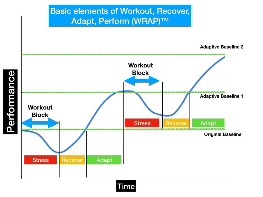
WRAP enables you to get the best out of every workout, never become overtrained, prevent burnout, accelerate the rate at which you see measurable results, get the best out of your determination, achieve your goals and be prepared for every event that you target, and above all, achieve sustainable fitness and feelings of wellbeing.
If you would like to understand why we are confident WRAP will work for you, contact us for a no-obligation chat.
References
1. Lehmann MJ, Foster C, Gastmann U, Keizer HA, Steinacker JM. Definition, types, symptoms, findings, underlying mechanisms, and frequency of overtraining and overtraining syndrome. In: Lehmann MJ, Foster C, Gastmann U, Keizer H, Steinacker JM., eds. Overload, fatigue, performance incompetence, and regeneration in sport. New York, NY: Plenum, 1999: 1–6.
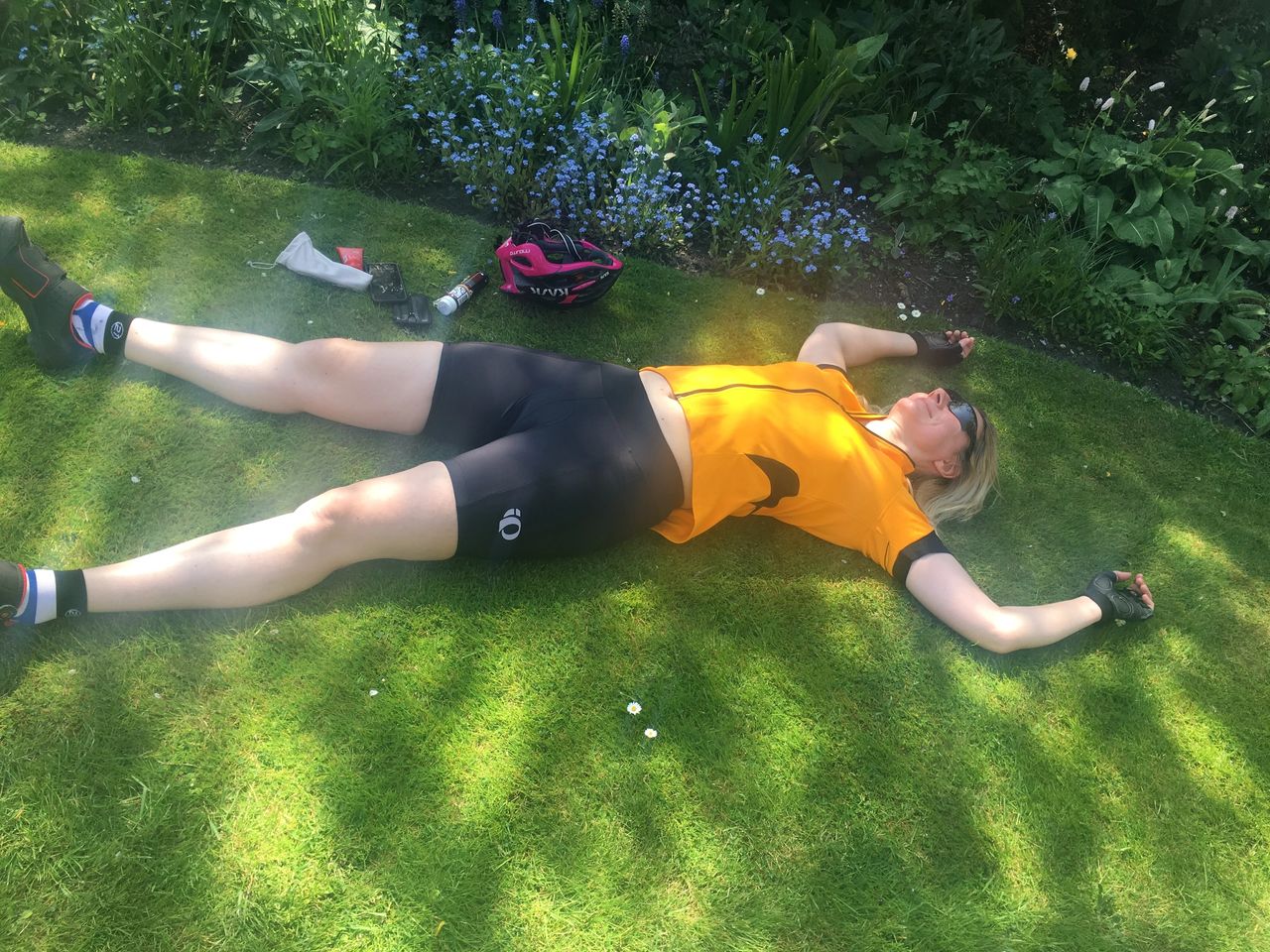 We’ve all been there, despair at the thought of another torturous workout filling our minds with black thoughts and sucking dry our motivation.
We’ve all been there, despair at the thought of another torturous workout filling our minds with black thoughts and sucking dry our motivation.
How can it be that only last week we had a spring in our step, our goals were being achieved, we were “on plan”, but that enthusiasm is now replaced by dread.
But why, can it be the lack of sleep, the feelings of heavy legs or our lives’ everyday stresses are getting to me. Why am I beginning to feel so unable to complete my workouts, or the “go get” ride I had planned dissolved into pain and loss of mojo.
When is a cycling training plan not right for you ? The Internet is full of training plans that promise to get you faster and stronger, and usually from reputable sources ? Unfortunately all is not what it seems.
Since taking up “cycling with intent” rather than as a mode of transport several years ago to regain fitness I have shied away from the idea of going to a weight training studio as part of my fitness regime; why would I possibly want to bulk myself out, and make myself slower by adding weight to a frame that already struggles to maintain the slimness of my youth....though I can honestly say that I have never been a streamlined “racing snake”, even as a cross-country and middle distance runner I always carried a little bit extra...possibly exacerbated by taking up weightlifting as a hobby while at college. Thankfully, through cycling I can now once again get into the same size jeans that I had when when 25, so not all that bad :-)
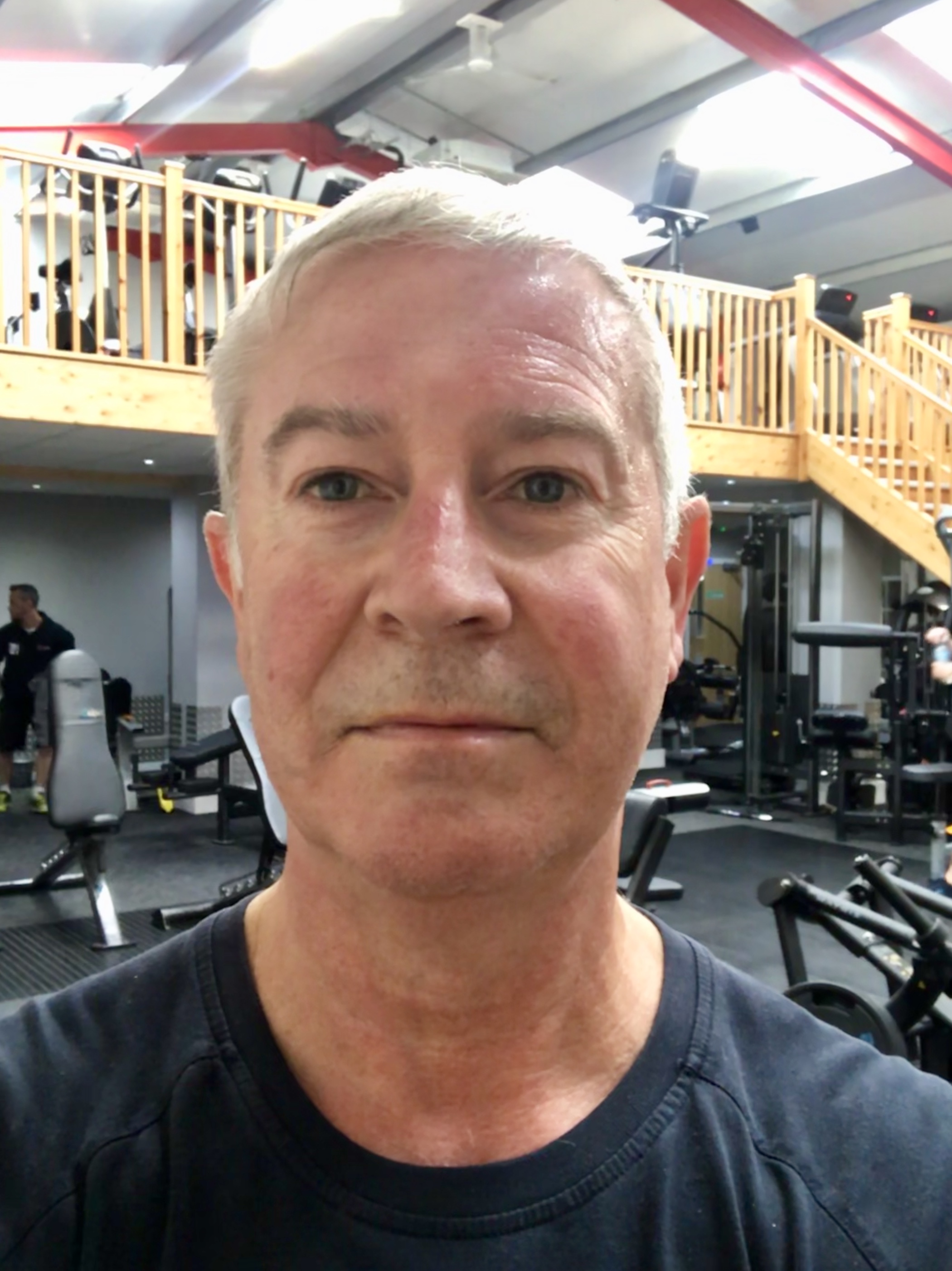 Having read up on how to continue to be able cycle at something nearing a “seniors” competition level I began to understand the idea that strength training made you heavier and slower was a misconception, just a myth.
Having read up on how to continue to be able cycle at something nearing a “seniors” competition level I began to understand the idea that strength training made you heavier and slower was a misconception, just a myth.
So at the age of 57, and understanding that I was now entering the inevitable ageing process that leads to muscle mass loss due to a natural drop in hormones, testosterone, etc, I was drawn to the potential benefits of using weight training to reverse or at least slow down the process.
